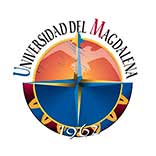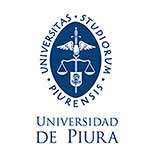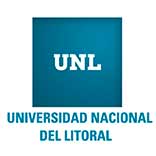Editorial rules
I. Definition, Mission and Objective of CAPIC Review.
CAPIC Review is edited and funded by the Permanent Academic Conference on Accounting Research. Its mission is to be a means of dissemination of original scientific contributions in accounting, auditing, management and business administration and its objective is to communicate and disseminate original contributions in accounting and related bodies of knowledge, which are generated in Universities, as in other institutions of higher education or national or foreign organizations and thus promote scientific cooperation, internationalize knowledge and through academic discussion stimulate the formation of scientific networks.
CAPIC REVIEW (ISSN 0718 4662) since 2018 is a continuous frequency electronic publication, each volume is closed at the end of each year, and publishes original contributions mainly in: Auditing, Accounting Education, Financial Analysis, Corporate-Financial Report, Accounting and Governance, Critical / Interdisciplinary Accounting, Accounting History, Accounting and Information Systems, Management Accounting, Public Sector Accounting, Environmental and Social Accounting, Taxes, Taxation, Ethics and Social Responsibility and those related to the management and administration of Business.
CAPIC Review has no costs or charges for the submission of papers, nor for the publication of their articles and has defined the following publication modalities: Original research articles, essays or works of professional interest, case studies, review articles, reviews bibliographic.
CAPIC Review reserves all rights to reproduce the content of the contributions. On the other hand, the opinions expressed by each author are their sole responsibility. There is no embargo in any of the versions of the article (Auto archive): see Sherpa Romeo.
CAPIC Review is declared an open access journal and adheres to the BOAI definition (Budapest Open Access Initiative, 2002); this is that both authors and users have the right to "read, download, copy, distribute, print, search or link the complete texts of these articles", indicating the source.
II.1 Contribution Format: Research Articles.
a) Research Articles. Its total length should not exceed 6000 words with Time New Roman 12. It should begin with the title that must be concise and informative, presented in Spanish and English. Its maximum length must be 15 words, it must not include abbreviations, neologisms or formulas.
Prior to submission, you must register on the Journal's site and it is highly valued to indicate your ORCID identifier (ID) in your background, if you are not registered see ORCID
In the initial submission of your article, you must omit the identification of the authors (double blind) and once your article has been accepted, under the title must go the name of the author or authors, who will be identified with their name, paternal and maternal surnames, and At the foot of the page, for each author, their University / organization, Faculty / academic unit, city and country, email @ will be indicated.
the name of the author or authors, who will be identified with their name, paternal and maternal surnames title must go under the title and data for each autor . their University / organization, Faculty / academic unit, city and country, email @electronic. will be indicated at the bottom of the page.
It continues with the following sections, use Time new Roman (12), capitalized and centered, the subsections in bold, aligned to the left.
b) SUMMARY AND ABSTRACT. Each one in no more than 250 words will include four paragraphs, the first with the theoretical background, in a second the purpose, objectives and scope of the investigated problem, the third paragraph with the methodological aspects such as the approach and techniques to study the problem and conclude with a paragraph with the results and discussion of the main findings. At the end of both the abstract and the abstract, between 3 to 6 keywords and keywords listed in alphabetical order should be included.
c) INTRODUCTION. It must contain statement of the problem, theoretical framework, justification of the study, objectives, formulation of hypotheses or conjectures and structure of the document.
d) METHODOLOGY, MATERIAL AND METHODS. The information collected, the populations under study and the methodology used are briefly described. The description must be brief and explicit enough for a possible reproduction of the results. In investigations that consider quantitative aspects, the design must include the base information of the applied statistical analyzes.
e) RESULTS. The research findings will be described, without discussing their significance. Whenever it is possible to do so, quantitative evaluations of their results, accompanied by information from the main statisticians will be presented
f) DISCUSSION, CONCLUSIONS OF THE RESULTS. This section contains the conclusion derived from the results, its discussion should focus on the interpretation of the results achieved and, if applicable, contrast it with those obtained by other authors. The author can, with grounds, speculate based on his results and propose lines of investigation.
g) BIBLIOGRAPHIC REFERENCES. It is organized alphabetically with French indentation, each title will include: Surname and initials of the name of all authors in capital letters separated by commas, year in parentheses, full name of the article. Bibliographic references will be made using the APA Sixth Edition format.
h) ANNEXES. If there were any.
i) Tables and figures (graphs, diagrams, drawings, photographs, among others), left alignment and in the upper part with Arabic numerals in the order that they are mentioned for the first time within the text, (Table 1, 2…; Figure 1 , 2, Etc.) in the next line the respective title that must be brief, or clear and explanatory. Then the table, table or figure and under them the "Notes" with a brief and descriptive phrase that works both as an explanation of the figure and also to give it a title. The source is also indicated here, only if it is not your own.
II.2 Of the format of other contributions: Essay
a) Essay. The total length does not exceed 4,000 words and/or 15 pages. The tables, figures for all types of contribution, must be inserted in the work, they can be in color or in black and / or grayscale and consider Arabic numbers for tables , figures and illustrations. It will consist of the following sections, written in Time new Roman (12), capitalized and centered, the subsections in bold, aligned to the left.
b) Title page. It should be concise and informative, presented in Spanish and English. Its maximum length must be 15 words, it must not include abbreviations, neologisms or formulas. The name of the author or authors, who will be identified with their name, paternal and maternal surnames must go under the title, and at the bottom of the page it will be indicated for each author, their University / organization, Faculty / academic unit, city and country, email @electronic.
c) Summary and abstract. Each one in no more than 250 words, at the end of the abstract as well as the abstract, between 3 to 5 keywords must be included, in lowercase and alphabetically ordered.
d) Introduction. It must clearly and precisely describe the approach to the topic that it will develop, establishing a brief justification, revealing its objectives and structure.
e) Development. It must express the ideas of the bibliographic review and / or ideas, in order to support the theme that is being developed and clearly establish prior knowledge and / or professional experience in the argumentation. Use of tables, charts, figures, etc. see II.1.i.
f) Final considerations. It must be according to the essay story, emphasizing the strong ideas developed
g) Bibliographic references: Sorted alphabetically and using APA Sixth Edition format.
II.3 Of the format of other works such as of professional interest, case studies, review articles, and text reviews
a) The total length should not exceed seven pages. For the format of the title, type and size of letter, such as the formats of tables and figures, summary and abstract, what is indicated for articles and essays applies. (see II.1.b; II.1.c and II.1.i.
b) They will be organized according to the headings stipulated by the author himself and not exceeding 4000 words. It is suggested that these include a summary, approach to the topic, development, conclusions and bibliographic references.
c) Text Reviews. It corresponds to a brief descriptive and informative note of a maximum of two pages that examines and summarizes the content of a book in which the author highlights the most relevant characteristics of the text.
Authors can see the guidelines applied to their research articles at:
https://capicreview.com/index.php/capicreview/pautainvestigacion
III. About the Review and Publication.
The contributions received in CAPIC Review or those selected by the Technical Committee for the Annual Conference of CAPIC, are submitted to a peer review process by external expert evaluators to the Editorial Committee and prominent academics belonging to prestigious universities in America and Europe.
The review process is in the double-blind review mode, anonymity remains during the process, whose maximum duration is twelve weeks on the understanding that authors timely incorporate the annotations of the reviewing bodies. Aspects such as length, title, summary, table formats, tables, figures, bibliography are reviewed and evaluated. And content aspects such as:
a) Originality and scientific contribution of the problem or event studied / investigated.
b) Organization of the content, citations, writing, tables, figures and graphics, etc., relevance and topicality of the bibliography.
c) Clarity and coherence of the discussion and conclusion with the objectives, the hypothesis, and the methodology used.
You can see the evaluation guideline for research articles here.
You can see the essay evaluation guideline here.
For the management and publication of CAPIC Review, OJS is used, an open source system developed by the Public Knowledge Project (PKP) that allows the management of the entire editorial process, from the reception of articles to their publication and online indexing, including peer review, proofreading, layout and revision of the final document. Figure 1. Editorial flow in OJS
If there are controversies in the CAPIC Review process, it generally adheres to the provisions of COPE, (Commtitee on Publication Ethics, Publication Ethics Committee). and consider using alternative mechanisms to resolve conflicts such as: mediation, conciliation, negotiation and arbitration, and if necessary, the corresponding corrections, clarifications, retractions and apologies will be published, and in particular see "Ethical Considerations" in Rules.
ABV / 2022

































